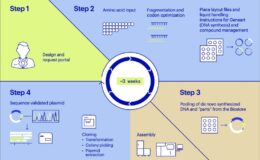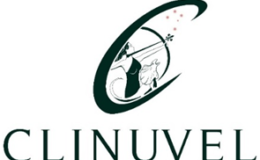
When the structure of DNA was elucidated in 1953, an unimaginable world of possibilities was opened. But we couldn’t even begin to dream about how we would go about using such powerful knowledge. Thirty years later, PCR — the process to replicate DNA in the lab — was developed, and innovation exploded. In 2001 — nearly twenty years ago — the first full human genome was sequenced and published.
The information we’ve uncovered through DNA is enabling us to explore and develop solutions for a variety of problems, from how to mimic human disease in animal models to finding new treatments and cures for devastating diseases such as cancer and Alzheimer’s.
Our ability to engineer biology is making DNA even more powerful. We are building upon the blueprint that was already there, strengthening it, giving it new and improved functions, and leveraging its characteristics to do useful things for us. Perfect examples include engineering the genomes of T cells to turn them into highly specific cancer fighters or modifying bacteria to produce useful products like insulin, food ingredients, or bioplastics. We are even beginning to use DNA to store information, perhaps one day replacing the physical hard drive.
But all of these applications require rapid, high-fidelity, high-throughput DNA synthesis — a fact that makes DNA synthesis the crux of all synthetic biology applications. As companies like Twist Bioscience and other industry leaders improve DNA synthesis techniques, even more elegant solutions to some of the world’s biggest problems are becoming possible. Here are four new and emerging applications that are being enabled by DNA synthesis.
Developing antibody-based therapeutics for Ebola, Zika, and the flu
Therapeutic antibodies available to front-line healthcare workers facing epidemic threats such as Ebola, Zika, and the flu — in only 60 days? It seems an impossible task — but researchers from Vanderbilt University, Washington University, the Ragon Institute of MGH, MIT, and Harvard, Seattle’s Infectious Disease Research Institute, and Beth Israel Deaconess Medical Center are closer than ever to reaching this goal.
Earlier this year, they entered a USD $28 million five-year cooperative agreement with DARPA called the Pandemic Prevention Program (P3) to produce therapeutic antibodies that could prove instrumental in preventing the next global epidemic. Through a series of four scientific sprints, the team will perfect their process. Their first sprint, which began in January of this year focused on Zika. In only 78 days, they went from human donor samples to therapeutic verification of their antibody candidates.
Image source: Twist Bioscience
A large part of the team’s success was due to the incredibly fast turn-around of DNA sequences for their antibody targets, which were provided by Twist Bioscience. “[Twist was] able to synthesize 700 antibody sequences from scratch, clone them into plasmids, and QC them and ship them back to us in nine days, which was pretty amazing,” said Robert Carnahan, associate professor of Pediatrics at Vanderbilt University School of Medicine and leader of the VVC Darpa sprint team.
Building the circular economy of plastics
Plastics are an integral part of everyday life, yet they are a significant source of our planet’s waste. Our oceans are drowning in plastics. It can take hundreds of years for plastic materials to break down in a landfill.
French company Carbios is seeking to reinvent the life cycle of plastics by producing enzymated plastics that break down naturally in as little as 125 days. Using proprietary technology, the company manufactures plastic materials embedded with enzymes that essentially give the plastic a self-destruct switch. The byproducts of this time-controlled enzymatic breakdown are then further degraded by bacteria naturally present in the environment.
The company is also working to significantly lower the cost of production for biosourced polymers such as polylactic acid (PLA) from lactic acid through a 100% biological process dependent on fermentation and enzymatic conversion of lactic acid to PLA. Carbios is also revolutionizing plastic material recycling through — you guessed it — enzymes. Their process essentially enables infinite usage of a plastic material, such as PET, by enzymatically breaking it down, purifying it, and then building it back up into its original form — which can then be used in any application the original material can be used in.
All of these revolutionary approaches to solving the world’s plastic problem depend on enzymes — which of course require DNA sequences that can be introduced into a microbe to test the function and efficacy of the enzymes for their intended purpose.
Lighting up our world with microbes
Artificial lighting not only increases stress in people by interfering with our body’s natural circadian rhythm, but it wreaks havoc on the environment as well, whether by damaging sensitive ecosystems, putting a strain on some of our planet’s most limited resources, or by polluting the environment through the industrial processes required to manufacture lights and lighting systems. French company Glowee is seeking to mitigate the widespread damage caused by artificial lighting by turning to a completely natural light source: microbes.
Bioluminescence is the property some organisms possess that gives them the ability to produce light (if you’ve ever seen fireflies on a summer night, you’ve witnessed bioluminescence). Glowee is engineering bioluminescent microbes from the ocean to optimize them for light production. The company engineers and tests variations of the natural light producing enzymes (which of course require DNA sequences) for desired characteristics such as light intensity, stability, and capacity — all critical for large-scale application of bio-derived light to replace artificial lighting systems.
But, could it actually work? Check out the company’s Glozen Room and decide for yourself:
DNA origami
Robots have helped make our lives easier in many ways, from carpet-cleaning Rumbas to liquid handling robots in the laboratory. But what if robots could help treat disease by delivering drug payloads to specific sites within the human body or toxic substances to diseased cells? This is exactly the concept behind nanoscale robots. It has been a challenge to make them a reality, though, because biological systems, and the communication networks between those systems is so complex. Researchers from the Institute of Nanotechnology & Advanced Materials in Israel and Harvard University’s Wyss Institute for Bio-Inspired Engineering have brought us one step closer to realizing disease-fighting nanorobots.
The team used DNA origami — the self-assembly of DNA molecules into nanoscale 3D shapes — to build nanorobots that could dynamically interact with each other inside a living organism to control a molecule targeting specific cells inside that organism. In this case, the team tested their DNA origami-derived nanorobots in a cockroach, a first step toward testing and optimizing the technology for use in humans.
“This work presents a new type of biological computing platform particularly fit for the task of controlling therapeutic molecules in living organisms,” write the researchers in their article published in Nature Nanotechnology. “Further design work building on this concept could significantly improve the capacity and efficiency of such systems towards a working prototype for computational control of therapeutics and other biological processes in humans in the near future.”
Where will DNA take us tomorrow?
These are just four examples of the amazing technologies and solutions enabled by DNA synthesis today. I think the scientists that built the world’s first DNA-based technologies would be truly inspired by the strides we’ve taken since then — as well as the steps we’re taking today and will take tomorrow to make our world a better place in which to live, work, and play.
Twist Bioscience, a global leader in DNA synthesis, is a Platinum Sponsor of SynBioBeta 2019 taking place October 1-3 in San Francisco, CA. Meet CEO Emily LeProust, CSO of Biopharma and Vice President of Protein Engineering Aaron Sato, CTO Bill Peck, and Director of Synthetic Biology Research Rebecca Nugent, who will all be taking the stage at the conference this year.














